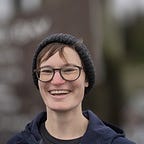Bradley Sisters, Bradley Method
“Bringing back the bush involves two quite different kinds of time. The first is time spent working…the second is the time spent waiting…This time costs patience, but no money at all.” — Joan Bradley
I’ve never felt like I had a good answer to the common icebreaker question asking who you would have dinner with if you could sit down with anybody, dead or alive. It’s a strange combination of being overwhelmed by the sheer number of choices, of incredible people who have lived and are living, and also a feeling that I’m not good with people, and should probably stick to learning about them from books because I wouldn’t know how to make the most of an opportunity to meet them.
Nor would I choose to have dinner with people like Joan and Eileen Bradley, with whom I lived in a different time and on a different continent, if I could choose to go for a walk in the park with them instead.
Joan and Eileen Bradley were sisters, both born in the 1910s in New South Wales, Australia. New South Wales is on the east coast of Australia — it’s the state where Sydney is located, and they did in fact live near the city. Neither married; they lived together their whole lives as far as I can tell, Joan holding a career as an industrial chemist, Eileen helping at home and working for a dentist (though not their father, who was also a dentist). After World War…
